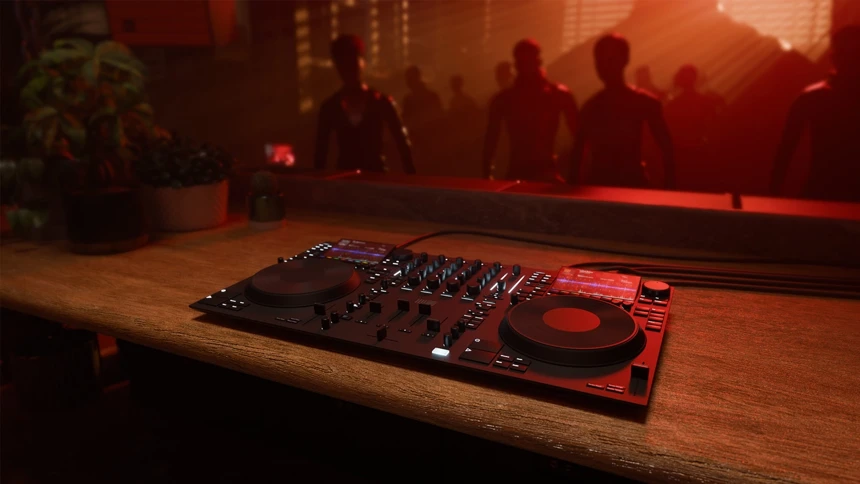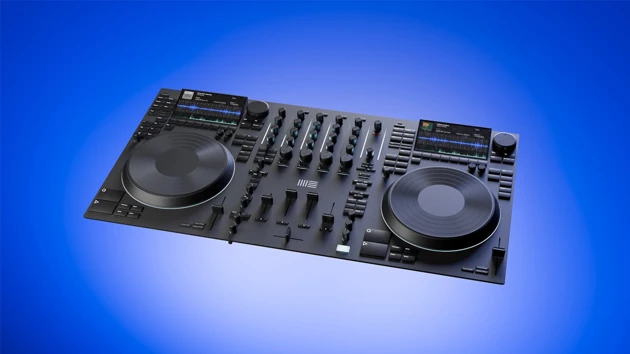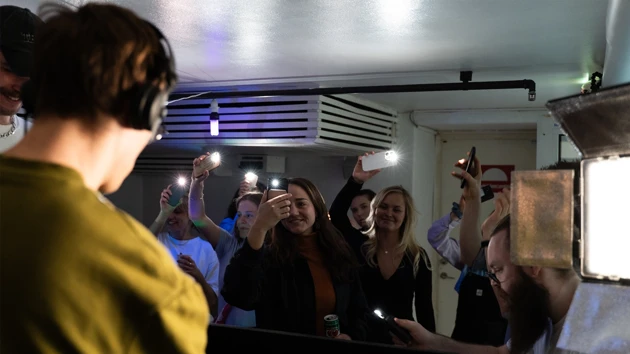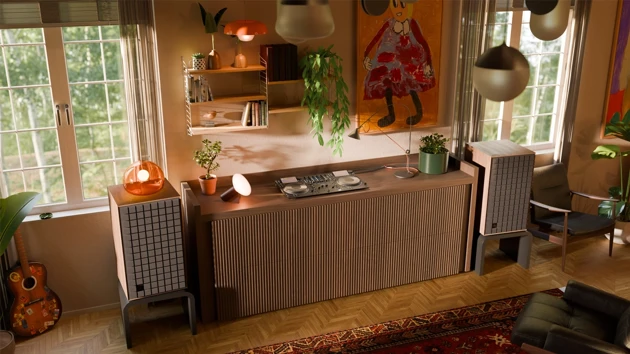Transition one, a hybrid controller with club-standard jogs, mixer section and displays, ready for both practice and performance.
From bedroom beats to club confidence: A design student’s answer to DJ stage fright
Viktor Strömberg knows what it feels like to freeze behind the decks. The lights, the crowd, the pressure to perform, it can all become overwhelming. “A lot of people say they’re DJs,” he says, “but you seldom see them actually performing.” That hesitation, shared by many aspiring artists, became the driving force behind his bachelor’s thesis at Umeå Institute of Design.

Viktor's grad project Transition is a hybrid solution: a DJ controller mirroring club gear, paired with a digital learning tool in a virtual venue.
Viktor, graduating from the BFA Industrial Design programme, set out to understand why so many talented DJs never make it from their bedrooms to the club. His project, Transition, is a response to that question. It is both a technical tool and an emotional support system, designed to help early-career DJs build confidence and find joy in live performance.
Hear Viktor Strömberg, graduate from BFA Industrial Design, talk about his grad project exploring how DJs can build confidence and joy when transitioning from home practice to live performance.
Bridging the gap
Performance anxiety is common in music, affecting up to 60 per cent of musicians. For DJs, the challenge is often twofold. Many are self-taught, practising on home equipment that looks nothing like the gear used in clubs. When they finally step into a booth, they face not only unfamiliar tools but also the emotional weight of performing in front of others.
Transition addresses both sides of the problem. It consists of two parts: Transition one, a DJ controller that mirrors club-standard gear, and Transition play, a digital rehearsal space that simulates a live venue. Together, they offer a bridge between private practice and public performance.

“My concept is divided into two main pillars,” Viktor explains. “One is the hardware, the technical aspect of DJing. The other is the emotional or social aspect, making DJs gain confidence in front of other people.”
Designing for emotion
Viktor’s approach was rooted in human-centred design. He interviewed 69 DJs, conducted surveys, and ran workshops to understand their experiences. One experiment involved tracking DJs’ heart rates and body temperatures as they performed in front of a live audience. The crowd was instructed to react in specific ways – cheering, dancing, or walking out. The physiological data revealed just how deeply performance anxiety can affect the body.

Body temperature and heart rate tracking during a live performance. Physical data is used to analyse how DJs react under pressure.
These insights shaped the design of Transition play. Built in Unreal Engine, the virtual venue allows DJs to rehearse in a responsive environment. While still in concept form, it lays the foundation for a platform that could one day include real-time crowd feedback, adaptive challenges, and even heart rate tracking to help users build resilience.
On the hardware side, Transition one was developed through iterative prototyping. Viktor tested cardboard and 3D-printed models to refine the form factor. The final design is portable, familiar, and focused on usability, with large jog wheels, tactile buttons, and an angled display to reduce glare.
From fear to flow
What sets Transition apart is its focus on emotional readiness. Most DJ tools prioritise technical precision. Viktor’s system recognises that confidence is just as important. By combining tactile practice with immersive rehearsal, it helps DJs move from fear to flow.

Transition one in a calm home setting. Designed to blend in with everyday interiors while still offering a club-standard layout for realistic practice.
“The challenge I wanted to tackle was bringing talented DJs enough confidence to dare to stand in front of people,” Viktor says. “To go up behind the booth and perform.”
In a world where creative expression is often stifled by self-doubt, Transition offers a new path forward. It is not just about mixing tracks. It is about helping people find the courage to share their sound.
